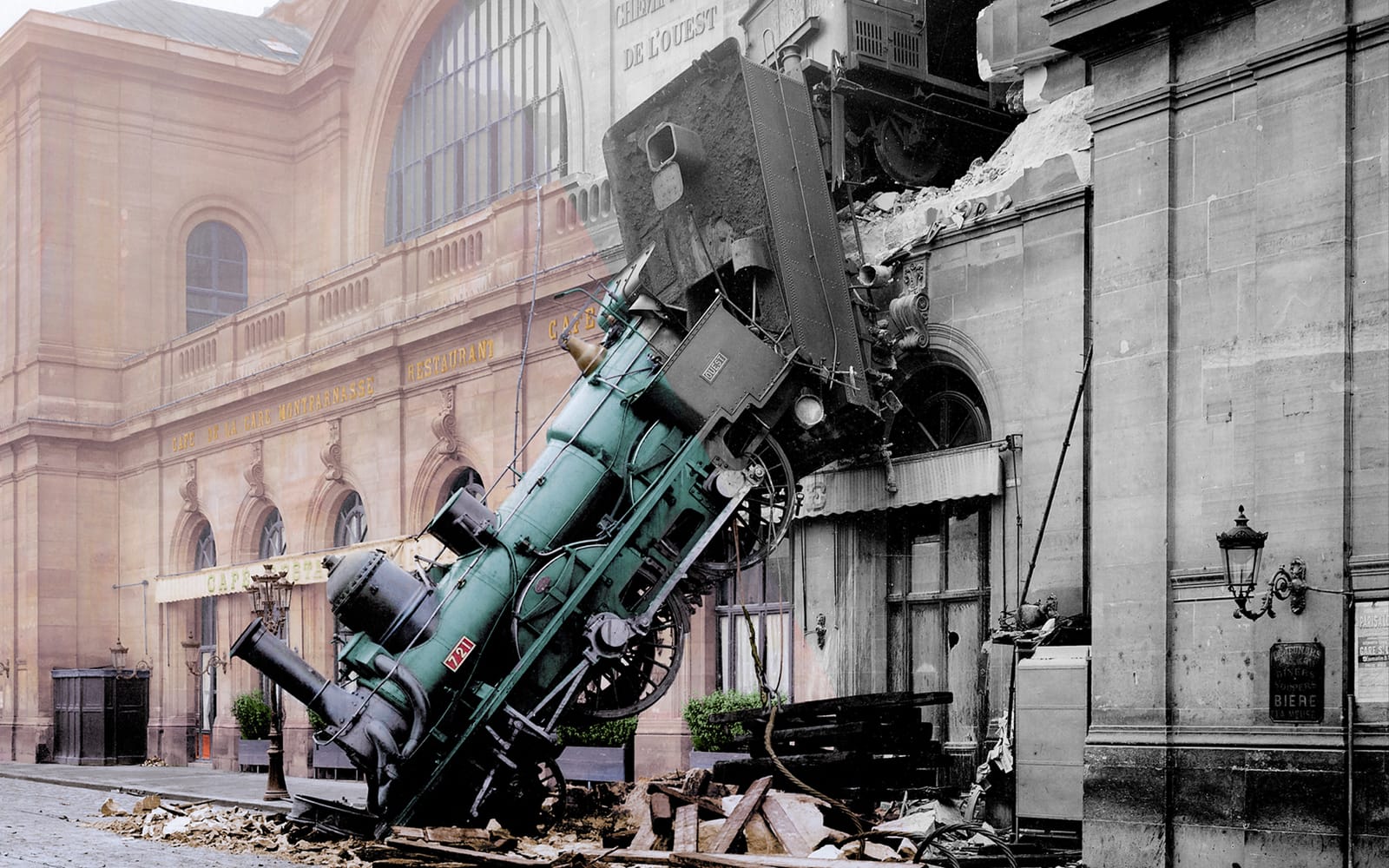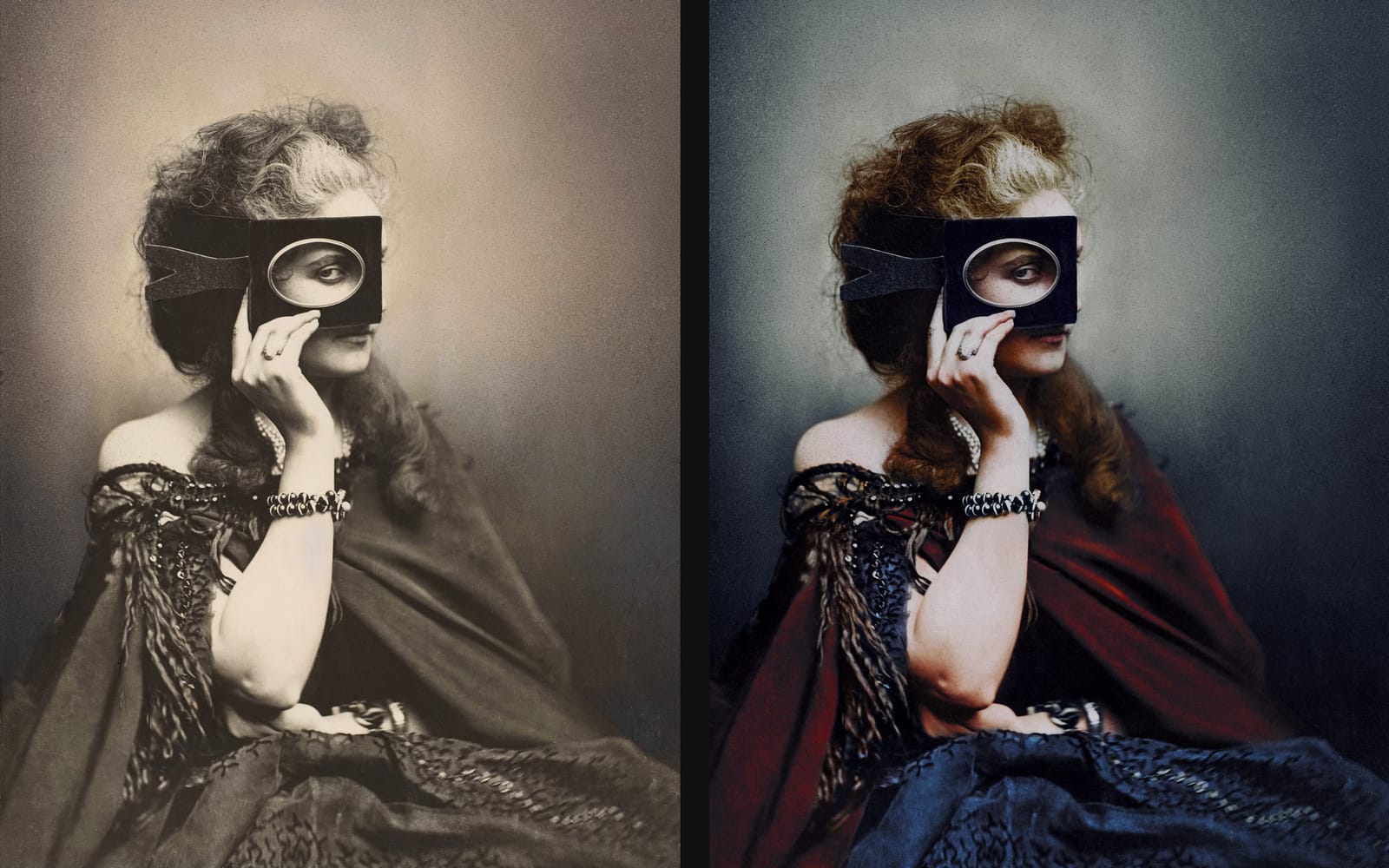1918: Inside Amiens Cathedral
A journalist describes a poignant service in a barricaded and subdued church


The thirteenth century Gothic cathedral at Amiens is one of the architectural wonders of the Middle Ages. For centuries it stood in serene splendour beside the River Somme in the Hauts-de-France, until, in 1918, it became a focal point in the First World War. During the spring of that year the Germans launched Operation Michael, which had among its objectives the capture of Amiens. The city was the base for an Allied command centre and, with its railway line, it was a crucial logistical hub too.
Many fled as the Germans advanced. Tens of thousands, one journalist wrote, ‘were turned adrift between the rising and setting of the sun’. The cathedral, too, came under attack with artillery causing damage to windows and masonry.
Words by Peter Moore
Photographs Remastered and Colourised by Jordan Acosta

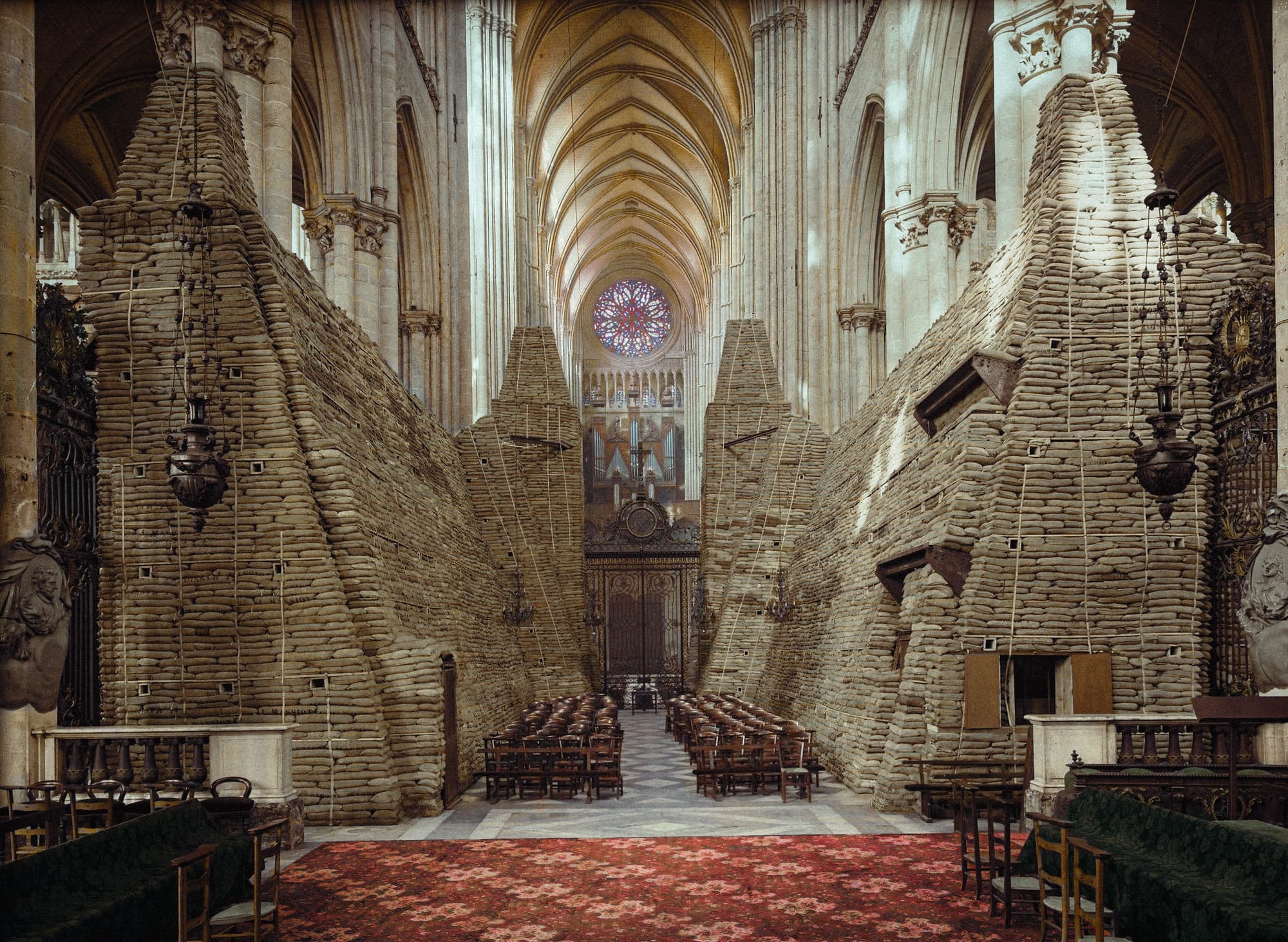
While the Germans made signifiant advances during Operation Michael, they failed to achieve any of their strategic objectives. Later that year, in August, a successful Allied counter offensive began. It pushed the front-line eastwards and away from the cathedral.
This photograph, taken by an unknown person at some point in 1918 captures the cathedral during this time. The great Gothic columns are crowded with sandbags. The nave, where so many had prayed and worshipped for so many centuries, is empty.
The account below was written by a journalist who was in Amiens in August of 1918.
16 August 1918
Silence and desolation have weighed heavily on the ruined town. Now that the enemy has passed eastward, his guns no longer menace Amiens, the blight is lifted, and the town will one day live again.
This (Thursday) morning I saw a foretaste of this new life.
It was in the broken Cathedral, where a priest sang Mass in the windowless choir before a wooden altar served by a wounded French private, while in the adjoining aisles, uncleared of debris, a limited congregation of returned wanderers, wearing dingy black, knelt amid the fragments of masonry and scraps of coloured glass, joining thankfully and not without tears in the chanting of the choristers.
It was a scene which moved us all. There have been many stately processions and ceremonies of great magnificence in the Cathedral of Amiens, but none I have witnessed has been so deeply impressive as the simple celebration of the Mass under the joined flags of the Allies.
It was more like a service in a humble village church, shorn of all pomp and pretension. A little temporary organ, hidden behind the sand-bagged stalls furnished a simple accompaniment for the plain-song music of the choir – twelve grave, elderly men. One aged Canon, bowed near the dusty throne of the absent Archbishop, was the sole representative of the Cathedral chapter.
The celebrant sat on a plain wooden chair, and he was without deacon or sub-deacon, although the Mass was sung. At the moment of consecration a man played the violin, played it so exquisitely that he seemed almost to be inspired and a shaft of unexpected sunlight fell from the broken window of the clerestory across his pale face, vanishing as abruptly just as the last notes died away.
There was no sermon. Two men dragged a small wooden pulpit near the altar steps, and a priest talked from it, in a voice vibrating with emotion, of the past glories of the Cathedral. He expressed the deep thankfulness of his people that it had lived through this ordeal.
Before him sat a few nursing sisters, British and French. Around the side screens pressed the refugees who had come home, an impressive picture, but very sad, in a setting that was grim and forbidding.
Gone were the mediaeval windows which were the pride of Amiens, the subdued radiance of old glass which gave to choir and eastern chapels their wonderful atmosphere of religious mystery. Hard grey light filled the empty frames, and beat upon the faces of the worshippers. Dust lay thick everywhere. The Cathedral had been stripped, that its remaining treasures might escape •
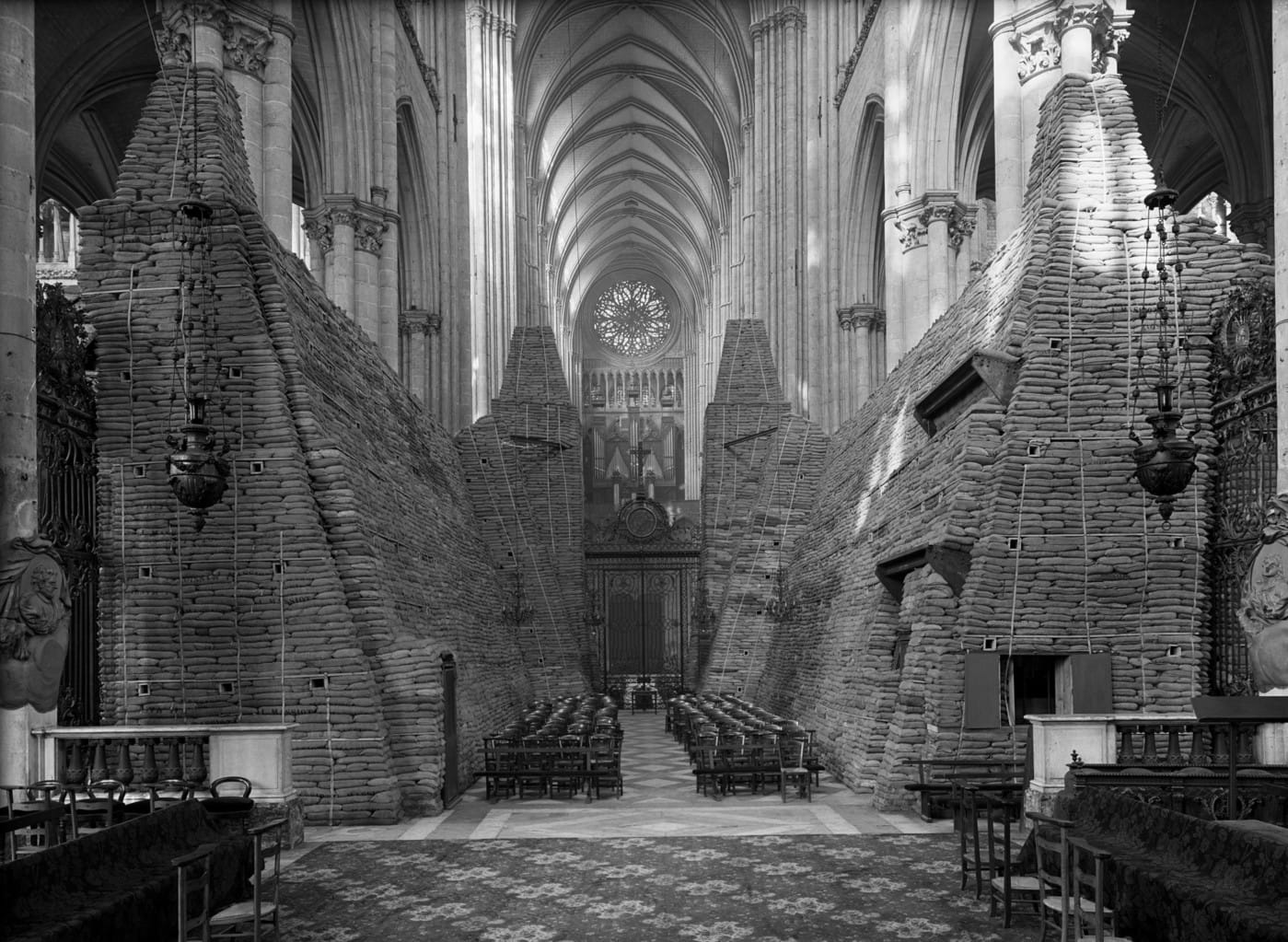
This Snapshot was originally published January 15, 2024.

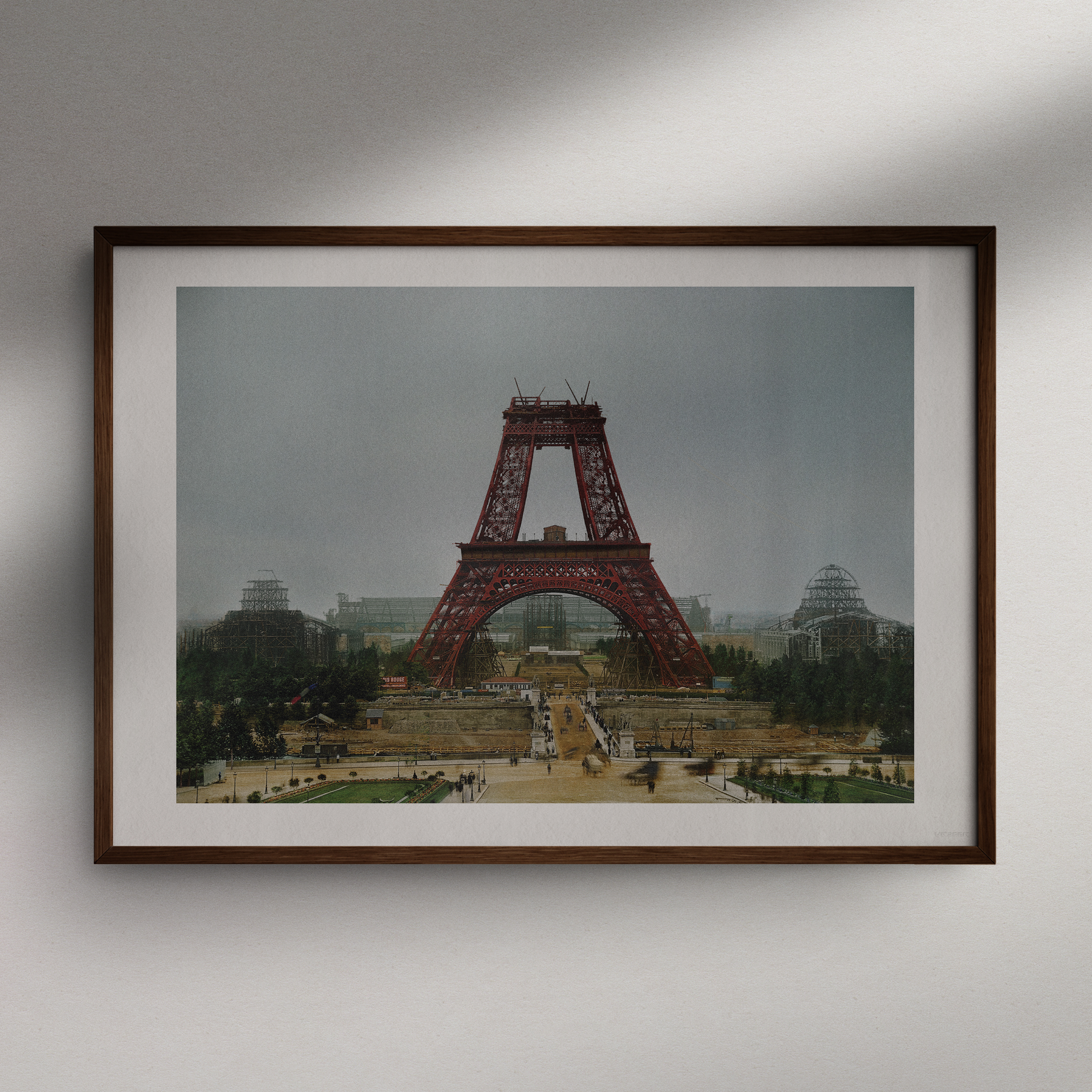
Ad: Unseen Histories relies on your patronage to operate. Our webstore offers a wide range of collectible museum-grade fine art prints, hand-printed in England for your wall space.
ColorGraph™ presents the most incredible colorized photography bringing the past to life. From start to finish, a ColorGraph print is made with exceptional care and attention. To mark its provenance, we emboss each one in the final stage of the hand-finishing process.

📸 Dive into our Features
🎤 Read Interviews
🎧 Listen to Podcasts
🖼️ Buy fine art prints & more at our Store



